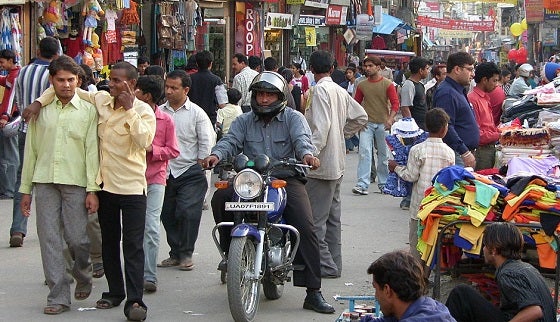Summary
On 7 November 2019, Moody’s lowered the outlook on the Indian government debt from ‘stable’ to ‘negative’. What does this suggest about the Indian economy?
On 7 November 2019, Moody’s, the ratings firm, lowered the outlook on the Indian Government’s bond rating from ‘stable’ to ‘negative’. The ratings for foreign currency and local currency long-term bonds were left unchanged. The ratings reflect the probability of default of the rated security. Low ratings result in higher interest rates, reflecting increased risk premia on debt securities. A change to a lower outlook is often a precursor to a downgrade. Moody’s predicts the slowdown in economic growth could be “long-lasting”. Embedded in the current Baa2 rating is a balance between India’s strengths as a large diverse growing economy with a low inflation rate and a stable financing base for government debt, against challenges stemming from fragility in the financial sector, a weak infrastructure and rising levels of government debt. The ratings change should not have come as a surprise. Over the past three months, nearly every multilateral institution and rating agency has lowered growth predictions for 2019-20, citing the immediate challenges of loss of consumer and business confidence, and over a longer horizon, structural weaknesses, which, without meaningful reforms, could constrain growth.
Shortly after downgrading India’s sovereign outlook, Moody’s also lowered its outlook for major Indian companies, including those from the financial sector, infrastructure and oil-marketing. These include the State Bank of India, HDFC Bank, Infosys, Tata Consultancy Services, Oil and Natural Gas Corporation and many others from ‘stable’ to ‘negative’. Revisions in the ratings of state-owned firms is a concomitant of the changes for the sovereign ratings.
The rating upgrade from Baa3 to Baa2 in November 2017 was predicated on the belief that “continued progress on economic and institutional reforms will, over time, enhance India’s high growth potential and its large and stable financing base for government debt.” The reforms put in place by 2017 were expected to lower the risk of a sharp increase in debt even during an economic slowdown.
The expectation of sustained reforms and a check on the fiscal balance have since been belied. Reforms seem to have stalled, and fiscal pressures increased as revenues contracted and expenditures rose with increasing subsidies, loan waivers, and increasing deficits in states budgets. India’s economic growth hit a six-year low in the April-to-June quarter, when it grew five per cent from a year ago. The slowdown impacted tax revenues, which, by 30 September 201, were far below the government’s target and the lowest in five years, putting pressure on the Indian government’s fiscal deficit target of 3.3 per cent of gross domestic product (GDP). The government will not meet its fiscal target – by September 2019, expenditures for 2019/20 (April-March) were 92.6 per cent of the fiscal year’s target. On 14 November 2019, Moody’s cut India’s GDP growth forecast for 2019-20 from 5.8 per cent to 5.6 per cent.
Moody’s contends that, “…the prospects for effective implementation of such reforms – that could support investment and growth at high levels and broaden India’s narrow tax base to have diminished since its upgrade of India’s sovereign rating in 2017.” The absence of reforms addressing these constraints is likely to place further pressure on India’s credit profile. The immediate prospects of further reforms that would support business investment and growth to high levels and significantly broaden the narrow tax base, have diminished. Without a resurgence of growth, Moody’s expects that the government will face significant constraints in narrowing the general government budget deficit and preventing a rise in the debt burden.
What Should the Government Do?
While government measures such as the corporate tax cut, a fund to boost investment in the realty sector, injection of capital into banks and income support for farmers should help to temper the slowdown, sustained financial stress among rural households, weak job creation, and, more recently, the looming prospect of a shadow banking crisis among non-bank financial institutions have increased the probability of a deeper economic slowdown. Small- and mediumsized enterprises are yet to adapt to the introduction of the Goods and Services Tax. The purchasing managers’ index fell to a 20-month low in October 2019, indicating continuing contraction in business activity. Credit growth, manufacturing and exports also fell in October 2019.
The reduction in interest rates and the availability of liquidity should help invigorate lending later in the fiscal year. The Reserve Bank of India has cut rates by 135 basis points thus far in 2019 and indicated further cuts. There are several steps the government can take to alleviate growing fiscal pressures. Foremost among these could be the privatisation of unproductive state-owned enterprises. Broadening the tax base is essential for fiscal sustainability in India. A focus on enhancing efficiency of government expenditures, including subsidies, can help alleviate fiscal pressures and enhance inclusion and efficiency. Reforms of subsidies in agriculture, including free electricity to farmers, streamlining environmental, labour and other regulations inhibiting investment and expansion of industry are imperative.
While India will find its way out of the current slowdown, the writing on the wall is clear. To sustain a high growth rate, the government needs to address the underlying structural problems that are well documented. Foremost among these are the imperatives of raising investment in human capital and embarking upon the next generation of structural reforms in land, labour and finance – reforms that will unleash the vast reservoir of entrepreneurial talent in the country and help realise India’s potential. Are policymakers willing to take on the entrenched interests from within and outside impeding prospects for change?
….
Dr Dipinder S Randhawa is a Senior Research Fellow at the Institute of South Asian Studies (ISAS) at the National University of Singapore (NUS). He can be reached at isasdsr@nus.edu.sg. The author bears full responsibility for the facts cited and opinions expressed in this paper.
-
 More From :
More From :
-
 Tags :
Tags :
-
 Download PDF
Download PDF



